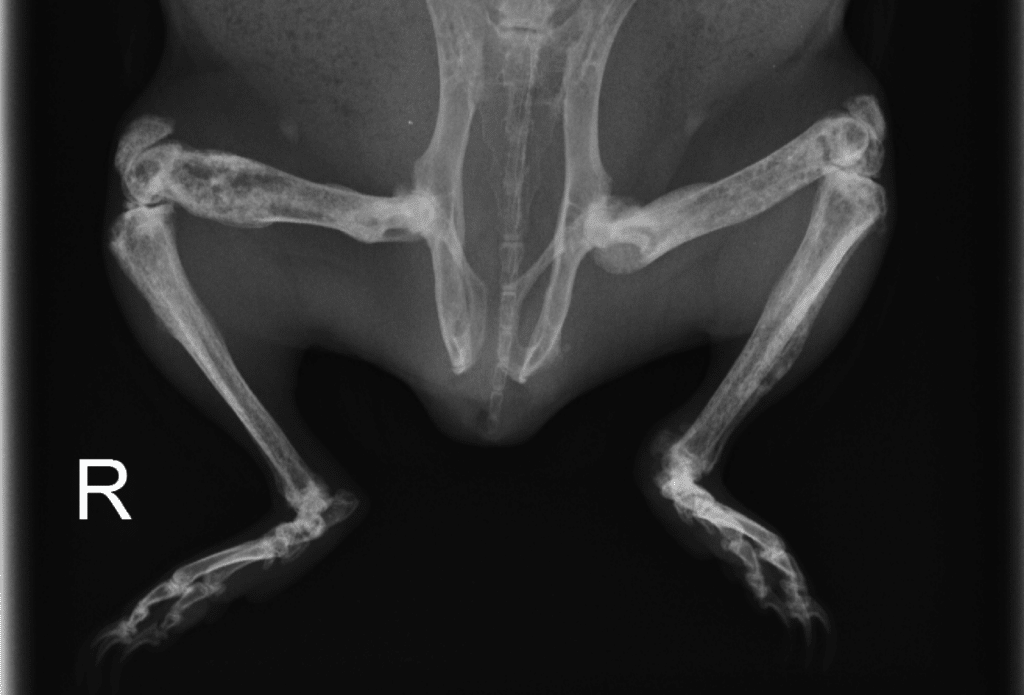Osteodystrophy in Guinea Pigs: A Comprehensive Guide
Introduction
Osteodystrophy, an inherited disease in guinea pigs, is a challenge for pet owners. This disease, known as "Satin disease," is particularly common in Satin guinea pigs but can affect other breeds as well. In this article we explain in detail the symptoms, diagnostic methods, causes and treatment options.
Symptoms of osteodystrophy
The disease is characterized by a number of symptoms:
- Replacement of bone tissue with unstable connective tissue
- Problems eating due to changes in the jaw
- Difficulty walking, hopping or shambling
- Increased susceptibility to bone fractures
These symptoms can vary depending on whether the disease originates from the head or the hip.
Diagnosis
Early diagnosis is crucial for effective treatment. The following methods are used:
- X-rays for precise assessment of the skeleton
- General examinations for initial indications
- Blood tests to check calcium levels
Differential diagnoses
It is important to distinguish osteodystrophy from other diseases such as polyarthritis or vitamin C deficiency (scurvy).

(C) https://www.hindawi.com/journals/crivem/2017/1321656/fig1/
Causes of the disease
The main causes of osteodystrophy include:
- Recessive inheritance in both parents
- Unbalanced calcium-phosphorus ratio in the diet
- Long-term malnutrition or lack of food
- Vitamin D deficiency or disturbances in the calcium balance
Treatment approaches
Treatment of osteodystrophy depends on the stage of the disease:
- Optimization of the calcium-phosphorus ratio
- Initially intramuscular injection of calcium gluconate, later oral administration
- Vitamin D supplementation and sunlight exposure
- Use of opioids and anti-inflammatory painkillers
Prevention and management
Responsible breeding practices and a balanced diet are crucial to preventing the disease. Regular health monitoring also plays an important role.
Osteodystrophy in guinea pigs requires attentive care and a deep understanding of the disease. Early diagnosis and tailored treatment can improve the quality of life and well-being of animals.
Diagram: Course of osteodystrophy
Which breeds are particularly affected?
When it comes to osteodystrophy in guinea pigs, there are some breeds that are particularly susceptible to this condition. Particularly noteworthy here are the satin guinea pigs. This breed is known for its shiny coat, but it is precisely this genetic peculiarity that makes it more susceptible to osteodystrophy, which is why it is often referred to as "satin disease".
It is important to emphasize that responsible breeding practices can reduce the risk of the disease in Satin Guinea Pigs. Breeders who care about the health and welfare of their animals avoid breeding animals that carry the gene responsible for osteodystrophy.
However, in addition to Satin Guinea Pigs, other breeds can also be affected by this disease, especially if they suffer from malnutrition or have an unbalanced calcium-phosphorus ratio in their diet.
In any case, it is important for guinea pig owners of all breeds to ensure a balanced diet and an adequate supply of vitamin D and calcium to minimize the risk of osteodystrophy. Likewise, if the disease is suspected, a veterinarian be consulted immediately to ensure early and effective treatment.
FAQ: Osteodystrophy in Guinea Pigs
What is Osteodystrophy in Guinea Pigs?
Osteodystrophy is a serious disease in guinea pigs in which bone tissue is replaced by softer, unstable connective tissue. This leads to various symptoms such as difficulty eating, brittle bones and problems walking. The disease is particularly common in Satin guinea pigs, but can also affect other breeds.
How do you recognize osteodystrophy in a guinea pig?
Typical signs of osteodystrophy include difficulty eating due to changes in the jaw, problems walking, protruding bones, especially in the back, and general weakness. In advanced cases, the animals can no longer walk and are more susceptible to bone fractures.
How is osteodystrophy diagnosed?
Diagnosis is usually made through a combination of clinical examination and x-rays, which reveal changes in the bones. Blood tests can also be helpful to check blood calcium levels and rule out other diseases.
How is osteodystrophy treated?
Treatment depends on the stage of the disease. It usually includes optimizing the calcium-phosphorus ratio in the diet, administering calcium and vitamin D, and pain management. A cure is usually not possible, but early treatment can help improve the animal's quality of life.
Can osteodystrophy be prevented?
Prevention is possible to a limited extent. It is important to have a balanced diet that ensures a correct calcium-phosphorus ratio and to avoid malnutrition. When it comes to Satin Guinea Pigs, responsible breeding is also crucial to minimize the spread of the disease. Regular health checks at the vet are also recommended.
Summary of osteodystrophy in guinea pigs
Osteodystrophy in guinea pigs is a serious disease that primarily affects the bone structure. In osteodystrophy in guinea pigs, normal bone tissue is replaced by softer, unstable tissue. This change causes osteodystrophy in guinea pigs to cause various health problems, including difficulty eating and limited mobility. Osteodystrophy in guinea pigs is particularly common in Satin guinea pigs, but can also affect other breeds. Diagnosing osteodystrophy in guinea pigs is usually done through x-rays and blood tests.
When it comes to osteodystrophy in guinea pigs, early detection is crucial for effective treatment. Treatment of osteodystrophy in guinea pigs aims to relieve symptoms and improve the animal's well-being. These include dietary adjustments to optimize the calcium-phosphorus ratio, as well as administration of calcium and vitamin D for osteodystrophy in guinea pigs. Pain management is also an important part of treating osteodystrophy in guinea pigs.
A complete cure for osteodystrophy in guinea pigs is usually not possible, but early and appropriate treatment can significantly improve the animals' quality of life. When it comes to osteodystrophy in guinea pigs, responsible breeding practices are also important to minimize the spread of the disease. Guinea pig owners should act quickly and consult a veterinarian .
Overall, osteodystrophy in guinea pigs requires comprehensive understanding and careful care. With the right knowledge and appropriate care, owners can help ease their guinea pigs' suffering from osteodystrophy and maintain their quality of life.
